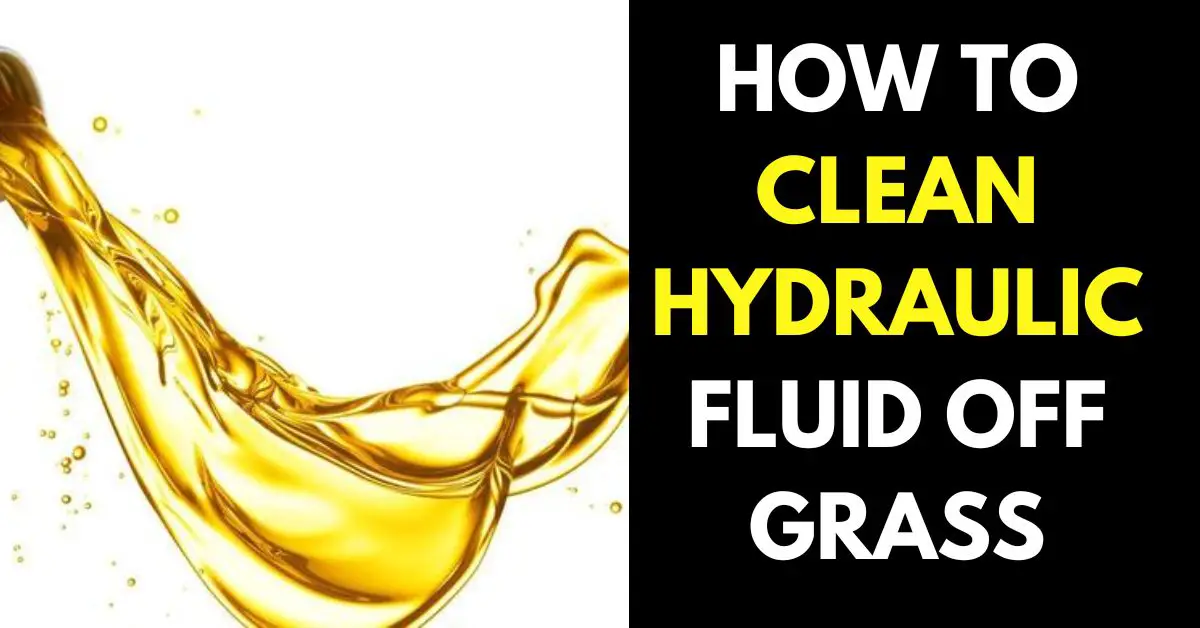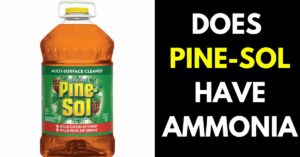
Hydraulic fluid is a type of oil that is used in heavy machinery to power hydraulic systems. While it is a valuable asset in keeping these machines running smoothly, it can pose a significant risk to the environment if it spills onto the grass. Hydraulic fluid can cause grass to die, leaving unsightly brown patches on your lawn. If left unaddressed, hydraulic fluid can also seep into the soil, contaminating the groundwater and potentially harming wildlife.
Fortunately, there are steps you can take to clean hydraulic fluid off your grass and prevent further damage. We will discuss how to effectively clean hydraulic fluid spills from your lawn using simple and easily accessible materials. Whether you are a homeowner or a professional landscaper, this guide will help you restore your grass to its vibrant and healthy state.
Can You Get Hydraulic Fluid Off Glass
Yes, hydraulic fluid can be removed from glass using the appropriate cleaning methods and materials.
One effective way to clean hydraulic fluid off glass is to use a commercial glass cleaner. Spray the cleaner onto the affected area and wipe it off with a clean microfiber cloth. You may need to repeat the process a few times to completely remove the hydraulic fluid.
Another method is to create a mixture of equal parts water and white vinegar. Apply the mixture to the glass using a spray bottle and let it sit for a few minutes. Then, wipe the glass clean with a soft cloth or paper towel.
How to Clean Hydraulic Fluid Off Grass
Cleaning hydraulic fluid off grass is essential to prevent the oil from harming the environment and causing permanent damage to your lawn.
Apply a Degreaser:
Here are some steps you can follow to effectively clean hydraulic fluid off grass:
- Absorb the excess fluid: Use absorbent materials like kitty litter, sawdust, or sand to soak up as much of the hydraulic fluid as possible. Spread the absorbent material over the affected area and let it sit for a few hours or overnight.
- Remove the absorbent material: Once the absorbent material has soaked up the hydraulic fluid, use a broom or rake to remove it from the grass surface. Dispose of the contaminated material properly according to local environmental regulations.
- Apply a degreaser: Apply a biodegradable degreaser to the affected area and let it sit for a few minutes. Follow the manufacturer’s instructions on the label for the appropriate dilution and application method.
- Rinse with water: After allowing the degreaser to sit for a few minutes, rinse the affected area with water using a garden hose or pressure washer. Make sure to direct the water flow away from any nearby storm drains to prevent the contaminated water from entering the sewer system.
- Repeat if necessary: For more severe spills, you may need to repeat the process of applying the degreaser and rinsing with water until the hydraulic fluid is fully removed from the grass.
- Monitor the affected area: After cleaning the hydraulic fluid off the grass, monitor the affected area for any signs of new contamination or damage to the grass. It may take some time for the grass to fully recover, so be patient and continue to care for your lawn regularly.
Dig The Contaminated Soil
Digging out the contaminated soil and replacing it is an effective way to remove hydraulic fluid from grass, but it is also a time-consuming and labor-intensive process. This method is recommended for large spills or cases where the hydraulic fluid has penetrated deep into the soil.
To clean hydraulic fluid off grass using the “dig out and replace” method, you will need to:
- Remove any visible hydraulic fluid from the grass surface using absorbent materials like cat litter or sawdust.
- Dig out the contaminated soil to a depth of at least 6-8 inches, making sure to remove as much of the affected soil as possible.
- Dispose of the contaminated soil in a proper manner, following local environmental regulations.
- Replace the removed soil with fresh topsoil and grass seed or sod. Make sure to water the newly seeded or sodded area regularly to encourage growth.
- Monitor the affected area closely for any signs of new contamination or damage to the grass.
Using Dish Washing Liquid
Using dishwashing liquid is another effective way to clean hydraulic fluid off grass. Here are the steps to follow:
- Absorb the excess fluid: Use absorbent materials like kitty litter, sawdust, or sand to soak up as much of the hydraulic fluid as possible. Spread the absorbent material over the affected area and let it sit for a few hours or overnight.
- Remove the absorbent material: Once the absorbent material has soaked up the hydraulic fluid, use a broom or rake to remove it from the grass surface. Dispose of the contaminated material properly according to local environmental regulations.
- Dilute the dishwashing liquid: Mix a few drops of dishwashing liquid with a bucket of warm water. Avoid using too much dishwashing liquid, as this can harm the grass.
- Apply the solution: Pour the solution over the affected area and use a stiff-bristled brush to work it into the grass. Make sure to cover the entire area evenly.
- Rinse with water: After scrubbing the area with the dishwashing liquid solution, rinse it thoroughly with water using a garden hose or pressure washer. Make sure to direct the water flow away from any nearby storm drains to prevent the contaminated water from entering the sewer system.
- Repeat if necessary: For more severe spills, you may need to repeat the process of applying the dishwashing liquid solution and rinsing with water until the hydraulic fluid is fully removed from the grass.
- Monitor the affected area: After cleaning the hydraulic fluid off the grass, monitor the affected area for any signs of new contamination or damage to the grass. It may take some time for the grass to fully recover, so be patient and continue to care for your lawn regularly.
Conclusion
Cleaning hydraulic fluid off grass is important to prevent the oil from harming the environment and causing permanent damage to your lawn. Using absorbent materials and a degreaser or dishwashing liquid are effective methods for removing hydraulic fluid from grass. After cleaning, monitor the affected area for any signs of new contamination or damage to the grass.
It may take some time for the grass to fully recover, so be patient and continue to care for your lawn regularly. By taking quick action and following these steps, you can effectively clean hydraulic fluid off the grass and prevent it from causing harm to your lawn and the environment.






